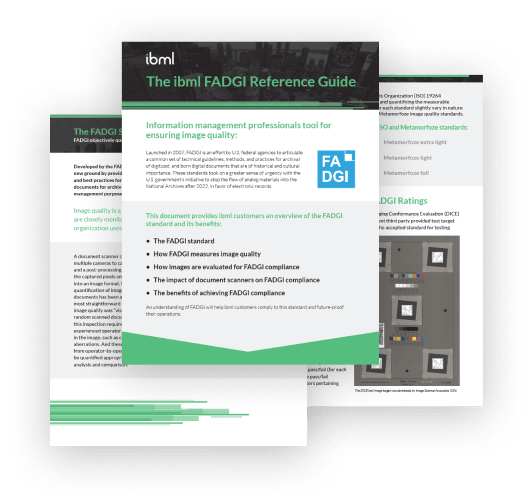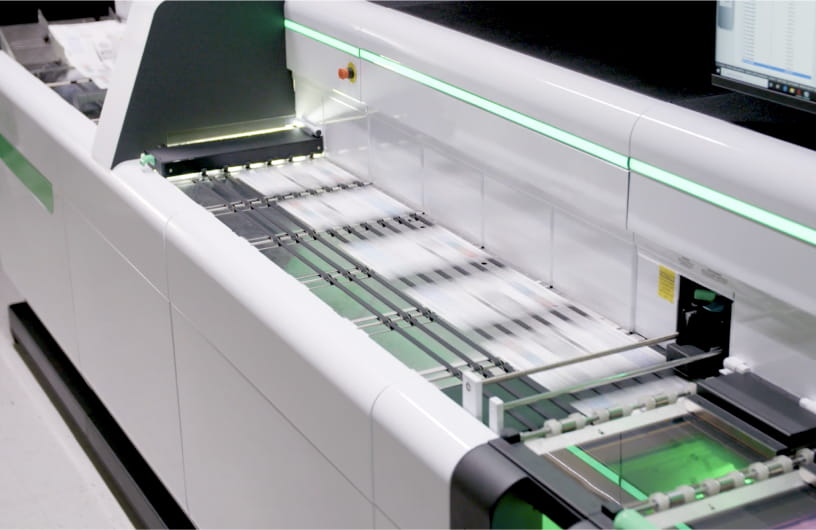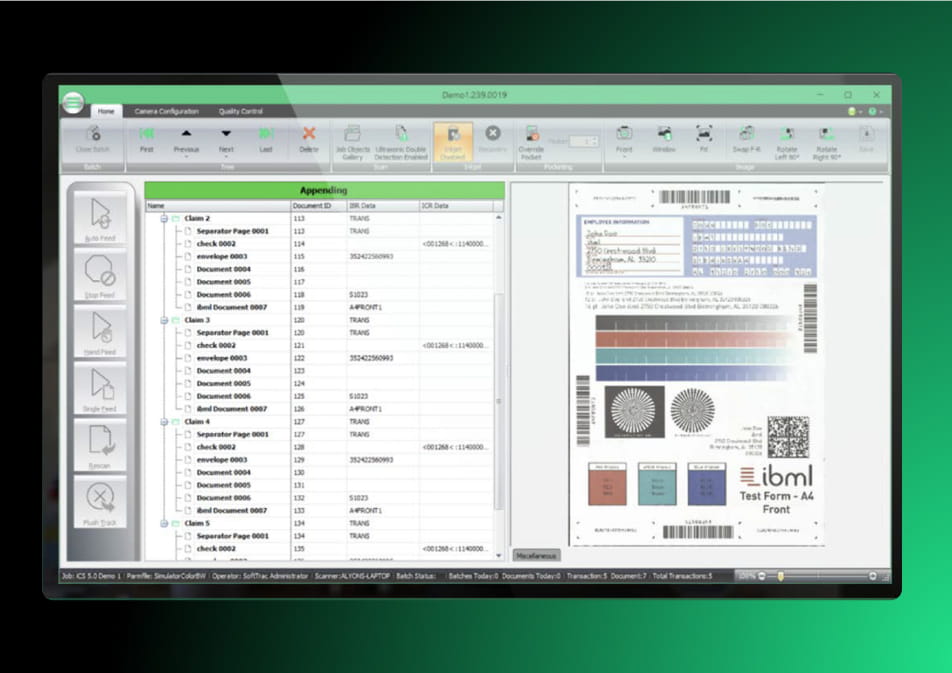What is FADGI?

As government agencies transition to an increasingly paperless environment, the federal government is tasked to ensure that all preserved files are held to a uniform standard. Thus, the Federal Agencies Digital Guidelines Initiative (FADGI) was born. FADGI is a common set of technical guidelines, methods, and practices for the proper archival of digitized and born digital documents. See FADGI-Compliant Scanners
Why is it important?
Following the U.S. government’s initiative called M-19-21, the federal government has now mandated FADGI compliance for all organizations working with federal agencies. The goal is to stop the flow of analog materials into the National Archives, in favor of electronic records.
Most importantly following FADGI standards for image quality ensure the digital images produced meet a quality standard that is good for long term archival and they are most reliable for data extraction with high data accuracy. While this is mandatory for federal agencies sending records to National archives to follow, now any organization can implement the same standards easily with ibml digitization technology.
Get more details about M-19-21 in our blog here:
Current Challenges

Inferior Image Quality

Bottlenecks

Slow Scanning Speed

Lack of Proper Infrastructure
How You Can Comply
To properly comply with FADGI, organizations must ensure captured images meet a
minimum of FADGI three-star quality.

How does the FADGI quality rating work? The FADGI evaluation system defines four image quality levels from one star to four stars, with higher star-ratings correlating to higher image quality and the applicability for different uses. Get more details about compliance in our blog here.

Learn everything about FADGI in our free White Paper, “The ibml FADGI Reference Guide”

Why ibml?
ibml offers the only FADGI three-star compliant high-speed scanner on the market, designed with patented hardware and software-based technology – making your FADGI compliance workflows fast and easy.
ibml Solution Benefits

Faster Preparation

Accelerated Throughput

Ease of Operation

Reliable Auditin
How ibml Solves FADGI Compliance

Certified High-Speed Hardware
- High Speeds: 321 -474 pages per minute (PPM)
- Guaranteed Three-Star Quality at up to 400 dpi reference

Certified High-Speed Software: FADGI Verification Module
- Streamlined Image Verification
- Automated Generated Audit Trails
Running at industry-best speeds of up to 474 ppm, the ibml Fusion HD scanner can generate FADGI-certified images with a 3-star rating at 300 dpi reference. Pairing the ibml Fusion HD with our proprietary ibml FADGI Verification Software Module allows you to go one step further by simplifying the verification process to one workflow and offering automated audit trails, saving you time and money.
For additional information on how ibml Fusion HD works: